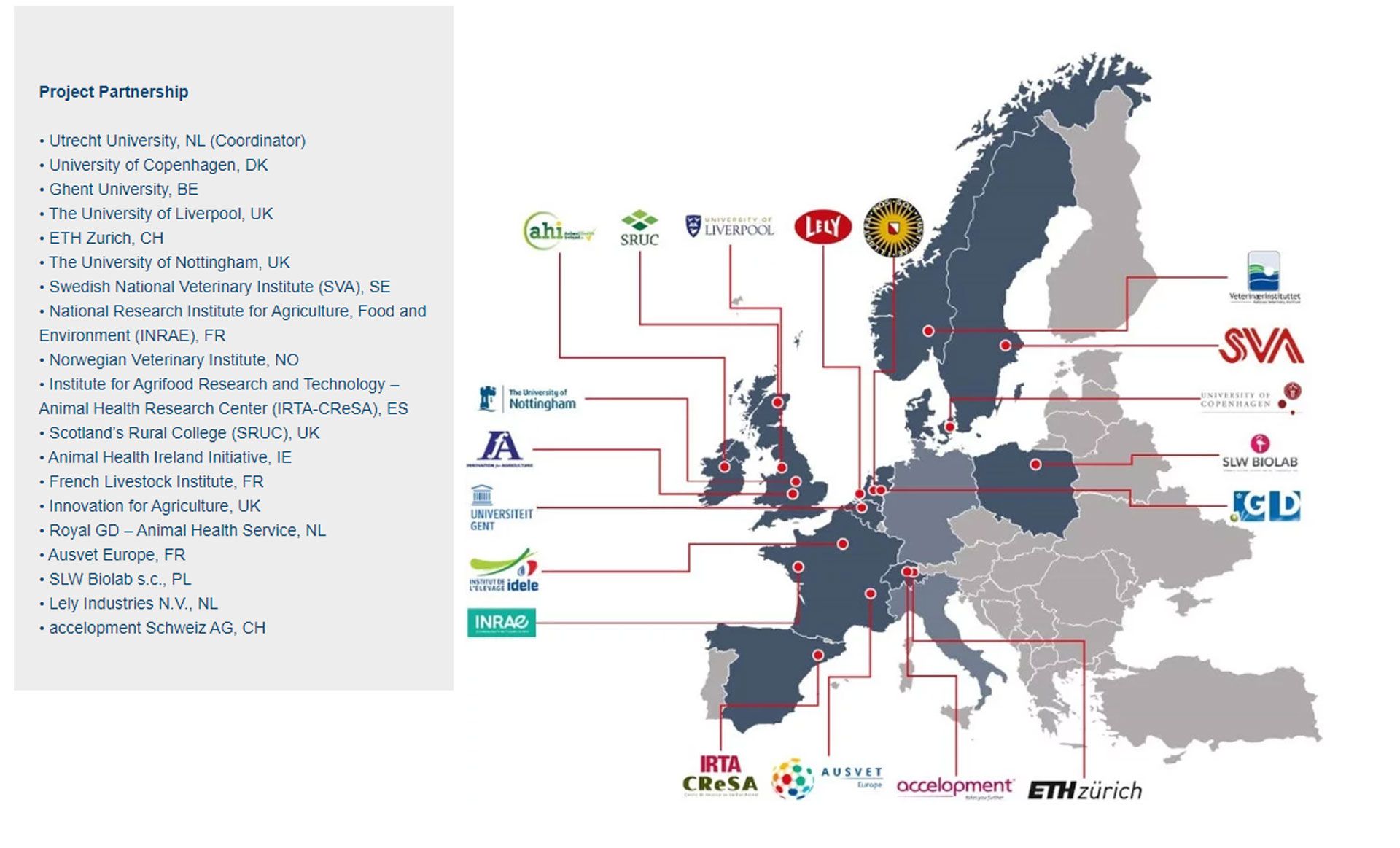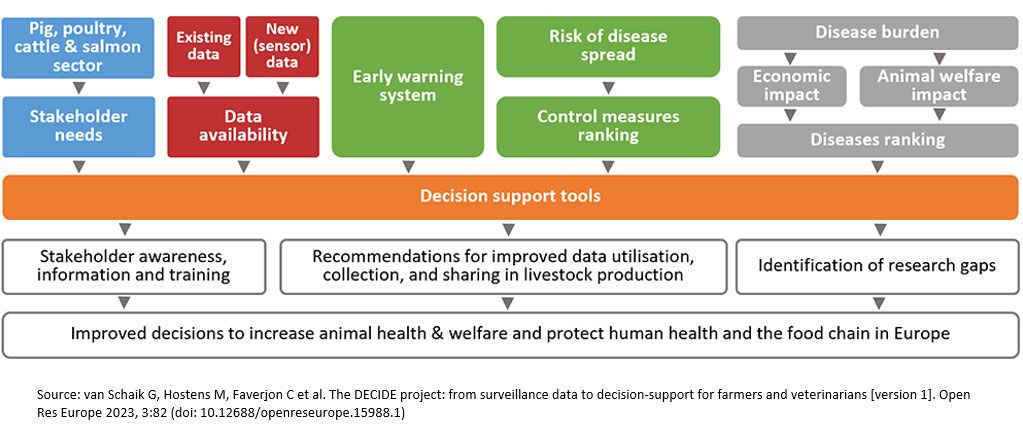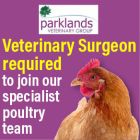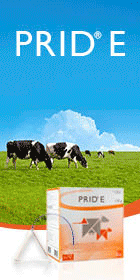DECIDE project: from data to decisions
Animal Health Ireland’s Dr Carla Gomes DVM MSc PhD DipECVPH, Pig HealthCheck Programme Manager and health psychologist Alison Burrell MSc., C.Psychol., Ps.S.I, explain what the DECIDE project is and what its aims are
Globally, animal production is expected to intensify and expand due to an increasing demand for animal-derived food and the mounting pressure on land. Coupled with that, there is pressure to reduce livestock carbon footprint and produce food in a more sustainable way. Contagious livestock diseases impede the efficiency of animal production and lead to economic costs, poor animal welfare, and for certain diseases, have an impact on trade, public health, and consumer confidence. The European Union has a regulatory framework for all epizootic and other important contagious diseases listed in the Animal Health Regulation (Regulation (EU) 2016/429). The status of these regulated diseases is generally well known in Europe.
However, the situation for endemic contagious diseases that the private sector is supposed to deal with is different. Farmers, veterinarians and other animal health managers in the livestock and aquaculture sectors are currently missing adequate information on the prevalence and burden of contagious endemic animal diseases. Diseases such as porcine reproductive and respiratory syndrome (PRRS), avian infectious bronchitis, cardiomyopathy syndrome in salmon or bovine coronavirus infection, are estimated to cause a 10 to 15 per cent reduction in performance efficiency of livestock farming, resulting in large financial losses and lower sustainability as well as affecting animal welfare (Delabouglise et al., 2017, Mohd Nor et al., 2012, Raasch et al., 2020, Rushton et al., 2018, Velarde et al., 2015). To be able to reduce these losses, professionals in the livestock and aquaculture sectors need adequate tools for risk assessment and for prioritisation of control measures for these diseases.
In this context, in 2020 the European Commission launched a call for projects to improve knowledge on endemic contagious diseases in livestock and aquaculture [SFS-10-2020: Epidemiology of contagious animal diseases: from integrated data collection to prioritisation]. In response to the call, the project ‘Data-driven control and prioritisation of non-EU-regulated contagious animal diseases’ (DECIDE) was developed (https://decideproject.eu/).
The main goal of DECIDE is to develop and evaluate data-driven decision-support tools that allow stakeholders in animal health and welfare management to make improved decisions on controlling endemic contagious animal diseases. DECIDE focuses on respiratory and gastro-intestinal syndromes in the three most important terrestrial livestock species (swine, poultry, and cattle) and on growth reduction and mortality in salmonids, the most important aquaculture species (salmon and trout).
To achieve this ambitious goal, DECIDE has assembled a unique multidisciplinary consortium of experts in veterinary epidemiology and diagnostics, data science, modelling, economics, animal welfare and social sciences. The consortium also includes several representatives of stakeholders with ample access to data, such as national animal health agencies, providers of veterinary services or farm equipment suppliers. The consortium has 19 partners from 12 countries (Figure 1). Animal Health Ireland (AHI) is the Irish partner of this consortium.

Figure 1: Network of organisations that are part of the DECIDE project (source: https://decideproject.eu/network/).
How is it going to achieve its goal?
The key ‘ingredients’ for such decision-support tools are the following: (i) a clear view on the stakeholder needs, barriers and drivers; (ii) availability of, and access to, relevant data; (iii) early warning systems that can detect signals of potential disease emergence or spread; (iv) a set of potential control measures, along with associated costs; and (v) an understanding of the disease burden in terms of economic and welfare impact (Figure 2).
Not all decision-support tools that will be developed will have all these components, but the tools will give various options. The tools might rank: the possible control measures, including treatments and preventive measures for reduction of spread; economic costs and benefits; and welfare implications. Based on embedded simulation models in the tools, stakeholders can see ‘what-if’ scenarios for a decision.
Data
The data useful for DECIDE is existing data, such as production records, that can be used to monitor deviations from the normal production process indicative of infectious diseases spread. The usefulness of novel data, e.g., sensor data or (video) imaging will be investigated. Data availability is crucial for the DECIDE project, but access to data most of the time is restricted by laws, regulations, privacy concerns, and market pressures, as individual actors operate in a competitive environment.
To overcome these challenges and assure availability of, and access to, relevant data, procedures to ensure access to data from the different species will be developed and documented. In addition, innovative approaches for supporting data access are being investigated e.g., federated access and federated learning (Papst et al., 2019).
Early warning systems
The early warning system consists of data analysis that can detect aberrations from the normal variation in the monitoring data. ‘Early’ should be interpreted in the sense that it detects signals indicative for disease timely enough for the stakeholders (e.g., farmers, veterinarians) to be useful for decision-making on disease-mitigating actions. Frequently updated visualisation of data helps the users understand and be aware of trends, including an immediate shift or deviation. The data information also confirms what the user already suspects and can be used to support general control strategies.
The risk of disease spread is a key determinant for disease mitigating actions of the stakeholders. The effectiveness of control measures greatly depends on the ability to reduce further spread. Therefore, in DECIDE, mathematical disease models are developed to simulate the spread of contagious diseases in the production systems of the four studied animal species. The input parameters of the models can easily be adapted to simulate spread of different pathogens, for different species and herd-types.
Stakeholders needs
Stakeholders often have a choice of control measures including doing nothing at all. To effectively support stakeholders in their choice, a ranking of control measures for effectiveness, costs and benefits, welfare implications, medicine use, etc. is needed. Obviously, whether to control a disease or not also depends on the impact of that disease on animal health and welfare. DECIDE is developing a multidimensional burden of disease metric (in collaboration with the Global Burden of Animal Diseases (GBADs) https://animalhealthmetrics.org/) that contains the economic impact as well as the impact on animal welfare and possibly on antimicrobial use. Thus, diseases can be ranked for their expected burden to prioritise the limited resources of the stakeholders for disease control.
Decision support tools
The above-mentioned key ingredients are combined in decision-support tools for the stakeholders. The adoption of tools also require in-depth understanding of stakeholder beliefs, needs and preferences. Incorporating social science methods, the tools are developed in close collaboration with the stakeholder end-users. The decision-support tools are incorporated in already existing platforms to facilitate uptake of the tools. DECIDE is developing prototypes for each species that will be tested in several partner countries in pilot implementations. The gained understanding of the stakeholders’ needs and preferences does not only inform the development of the functionalities of these prototypes (i.e., what they can do), but also the output visualisation (i.e., how data is shown or how early warnings are framed).
The pilot implementations are the ‘playground’ in which the DECIDE innovative framework and tools are tested and adapted again, learning from experiences with stakeholders and users across species. Through the pilot implementations, we ensure that the generic methods and framework can be easily adapted and implemented for existing platforms. The long-term sustainability of the developed tools is ensured by an open science approach to enable access for the benefit of other scientists and society as a whole.
The project is planned for a total duration of five years to give sufficient time for developing all ‘ingredients’ for the decision-support tools and then for integrating and testing prototypes of the decision-support tools in pilot implementations in at least two iterations within years three to five. Some of the tools may just be decision trees, while others are envisioned to be fully functional interactive dashboards.
A key element of DECIDE is to build prototypes of the decision-support tools, one for each of the four species (pigs, poultry, cattle, salmonids). A prototype consists of generic models with country- and herd-specific baselines (e.g., [ab]normal mortality levels differ between herds and countries) to detect aberrations in the data for the different syndromes. Each of the prototypes will be tested and further refined in pilot implementations in at least two different countries.

Figure 2: The concept of the DECIDE project.
What has been done so far in Ireland?
Cattle
During 2022, Animal Health Ireland held several online focus groups with n=19 cattle farmers (dairy and beef sector) which aimed to investigate farmers’ experiences, perceptions, and expectations of technology use and youngstock disease management to identify their needs and inform the design of future decision support tools. Similar focus groups were also conducted in Belgium, the UK, the Netherlands, Norway and Sweden, with data analysis being led by colleagues from the University of Nottingham.
Qualitative findings were mapped on to a typology of fundamental needs for human-centred design (Desmet and Fokkinga, 2020) and highlighted farmers’ psychological needs in relation to technology use such as autonomy (data ownership and the need for freedom of decision), comfort (convenience, peace of mind and simplicity), competence (knowledge and understanding, skill progression) and security (financial safety and social stability).
These results will be disseminated to project partners across participating EU countries to support future innovations and be published in a peer-reviewed journal later in 2023. An open-ended qualitative survey was also conducted with private veterinary practitioners on their experiences of using data and technology on cattle farms in Ireland (n=24) and the UK (n=36). Findings were mapped on to a similar typology of fundamental needs for human-centred design (Desmet and Fokkinga, 2020) and highlighted that veterinarians would like to have access to technologies that support them to demonstrate their role in herd health planning, influence farmers’ behaviour, and contribute to the sustainability of both the beef and dairy industries.
Pigs
Animal Health Ireland over the course of 2022 held two online focus groups with pig-specialised veterinarians to investigate their experience and views on pig health management and technology use, which will facilitate the development of data-driven decision support for pig health and welfare management. Similar focus groups were also conducted in Spain and the Netherlands, with qualitative findings also being disseminated to support future tool design. Over this summer a survey will be conducted with farmers to investigate their experience, perceptions, and expectations of using digital decision support tools for pig health management. Before the end of 2023, a survey will also be conducted with all users of the Pig HealthCheck web system to evaluate how user-friendly the system is and its usefulness. The findings from this survey will inform and help develop the Pig HealthCheck web system.
Salmon
Focus groups and 1:1 interviews were held with a number of key stakeholders in the Irish salmon industry including salmon health specialists and veterinary practitioners, health authority regulators and salmon producers. They were asked about their needs and experiences in relation to data collection and visualisation, types of data required in salmon health decision-making and disease detection, data sharing and what devices or software are available to them to record data. They were also invited to provide feedback on a prototype developed by a research partner organisation and discuss how it could be useful to the Irish salmon industry stakeholders.
Discussion
Endemic contagious diseases are the main worry in day-to-day animal health management for farmers and their veterinarians. The so-called production diseases are often caused by multiple pathogens and pose the largest threat to animal health and welfare and, thus, to the productivity of both terrestrial and aquatic species. DECIDE focuses on the three most important meat-producing terrestrial species (swine, poultry and cattle) and the most important aquatic species, salmon and trout. For young, growing animals, gastro-intestinal and respiratory tract infections are the most prevalent syndromes that cause much growth reduction, mortality, and use of medicine. In salmonids, respiration is impaired by gill diseases, and diseases causing circulatory failure and inflammation of gastrointestinal organs lead to growth reduction and mortality. The four species have different levels of integration of farming and thus of available data and differ in the level of data (animal, herd, unit, cage). However, the concept that a contagious disease spreads in an epidemiological unit and causes disease is the same.
When syndromes are noted, stakeholders such as farmers, veterinarians or other animal health managers need to decide on actions to prevent further spread, diagnose, treat, vaccinate, or take preventive actions for the next round of production. These decisions and choices are not necessarily rational and often not based on a sound quantitative basis (Kaler & Ruston, 2019). Why, how and when stakeholders decide to take action (the drivers) and why they do not (barriers) are some of the key elements of the DECIDE project. The social scientists in DECIDE aim to ensure that in co-creation with the stakeholders, the project delivers suitable tools.
The DECIDE project is intended to lead to the use of existing data for disease monitoring and to rank and prioritise disease control and decision-support for the stakeholders. DECIDE aims to increase stakeholder awareness about infectious contagious endemic disease control and identify gaps for further training. The methods and framework developed in DECIDE are specific enough to support stakeholders for the focus-species and syndromes in DECIDE, but can also be generalised across species, countries or diseases. Research gaps are identified and shared. The use of the co-created decision-support tools should lead to improved decisions regarding disease control and thus result in improved sustainability, animal health and welfare. More efficient use of resources and less use of medicines will also positively impact human health and the environment.
Grant Information: This research was financially supported by the European Union’s Horizon 2020 research and innovation programme under the grant agreement No 101000494 (Data-driven control and prioritisation of non-EU-regulated contagious animal diseases [DECIDE]).
This article has been adapted from: van Schaik, G., Hostens, M., Faverjon, C., Jensen, D.B., Kristensen, A.R., Ezanno, P., Frössling, J., Dórea, F., Jensen, B.-B., Carmo, L.P., Steeneveld, W., Rushton, J., Gilbert, W., Bearth, A., Siegrist, M., Kaler, J., Ripperger, J., Siehler, J., de Wit, S., Garcia-Morante, B., Segalés, J., Pardon, B., Bokma, J., Nielen, M. The DECIDE project: from surveillance data to decision-support for farmers and veterinarians. Open Research Europe. https://open-research-europe.ec.europa.eu/articles/3-82/v1 please consult the main article for more information about the project.
Delabouglise A, James A, Valarcher JF, et al.: Linking disease epidemiology and livestock productivity: The case of bovine respiratory disease in France. PLoS One. 2017; 12(12): e0189090.
Desmet, P., & Fokkinga, S. (2020). Beyond Maslow’s pyramid: introducing a typology of thirteen fundamental needs for human-centered design. Multimodal technologies and interaction, 4(3), 38.
Kaler J, Ruston A: Technology adoption on farms: Using Normalisation Process Theory to understand sheep farmers’ attitudes and behaviours in relation to using precision technology in flock management. Prev Vet Med. 2019; 170: 104715.
Mohd Nor N, Steeneveld W, Mourits MC, et al.: Estimating the costs of rearing young dairy cattle in the Netherlands using a simulation model that accounts for uncertainty related to diseases. Prev Vet Med. 2012; 106(3–4): 214–224.
Papst F, Saukh O, Römer K, et al.: Embracing Opportunities of Livestock Big Data Integration with Privacy Constraints. In: Proceedings of the 9th International Conference on the Internet of Things. Association for Computing Machinery, Bilbao, Spain, 2019; 27.
Raasch S, Collineau L, Postma M, et al.: Effectiveness of alternative measures to reduce antimicrobial usage in pig production in four European countries. Porcine Health Manag. 2020; 6: 6.
Rushton J, Bruce M, Bellet C, et al.: Initiation of Global Burden of Animal Diseases Programme. Lancet. 2018; 392(10147): 538–540.
Velarde A, Fabrega E, Blanco-Penedo I, et al.: Animal welfare towards sustainability in pork meat production. Meat Sci. 2015; 109: 13–17.
1. Which species are covered by the DECIDE project?
A. Pigs, small ruminants, cattle and poultry
b. Cattle, pigs and poultry
c. All terrestrial livestock species
d. Cattle, pigs, poultry and salmon
2. What are the diseases covered by DECIDE?
A. EU-regulated disease
b. Exotic diseases
c. Endemic disease
d. Non-contagious diseases
3. What are the key ‘ingredients’ of DECIDE?
A. Clear view on the stakeholder needs, barriers and drivers
b. Availability of and access to relevant data
c. Early warning systems that can detect signals of potential disease emergence or spread
d. All of the above
4. What is the main goal of DECIDE?
A. To implement a new framework to collect data
b. To develop decision support tools to be integrated into existing farm management systems
c. To estimate the burden of diseases
d. None of the above
ANSWERS: 1D; 2C; 3D; 4B.









